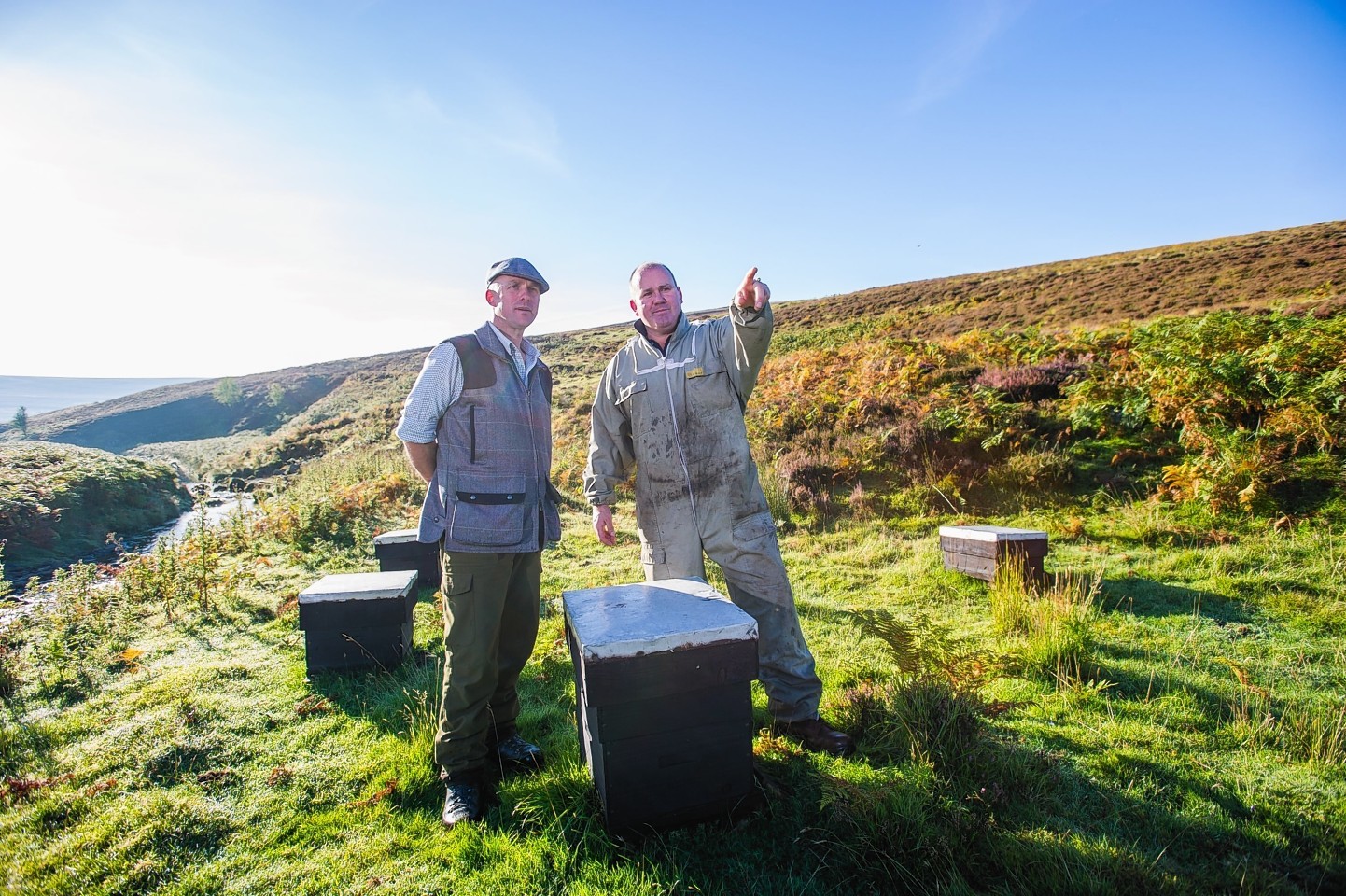Bees and honey producers are thriving across parts of Scotland thanks to one of the nation’s most iconic birds – the red grouse.
For a number of years honey bee populations have been in a dangerous decline due to a range of factors such as deforestation, climate change, and a number of other factors.
But now the Scottish Beekeepers Association has revealed rural estates have seen a proliferation of bees around the heathers on the moor.
Heather moorland is most prominent on grouse managed moorland, where heather is a central part of the red grouse’s diet. Around 75% of the world’s heather is in the UK, with the majority of that on moors in Scotland.
However, it’s not only the red grouse that makes use of the heather.
Gavin Ramsay, a science officer at the SBA, said: “At a time of year when bees can struggle to find sufficient forage elsewhere, moorland provides the perfect location for bees.
“There is an undoubted health benefit for the bees arising from well-provisioned colonies bustling with young bees raised on managed heather moors.
“That contrasts with colonies left in the arable lowlands at sites where there is little forage in August most years and where bees may need fed to thrive.”
Across estates the Angus Glens and Tayside, beekeepers are positioning their hives on estates – in partnership with estate owners and gamekeepers – to increase the production of heather honey, fast becoming a famed Scottish food product to rival the acclaimed manuka honey.
Ian Elliott, head gamekeeper at Hopes Estate, and part of the Lammermuirs Moorland Group, said: “The moorland heather, which is maintained to the highest standard as part of the integrated management of the estate, is favoured by beekeepers due to its rotational renewal.
“We have hosted hives on the moor for decades and it adds another layer of bio-diversity to the estate. We are delighted to work in partnership with local honey producers and it is exciting from our point of view that we can play a small role in creating a Scottish food product that is in demand around the world.”

